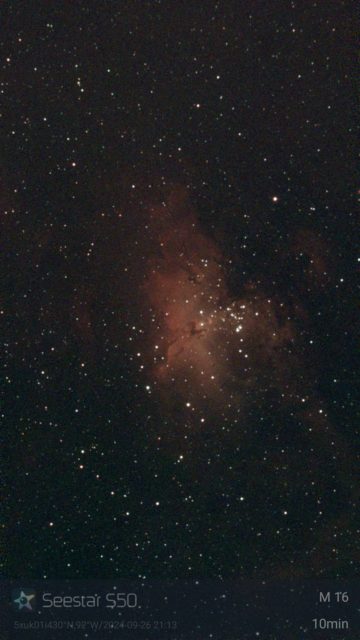
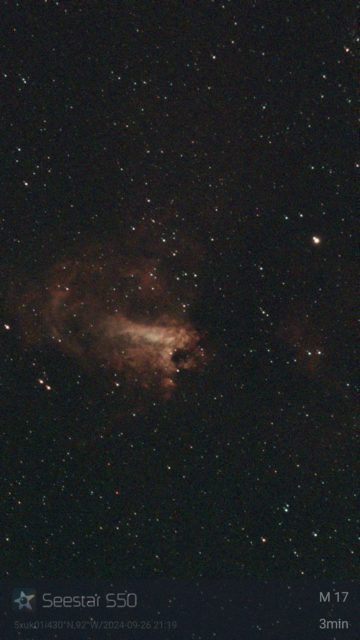
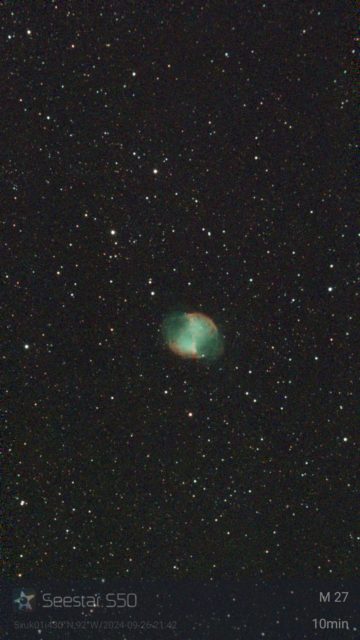
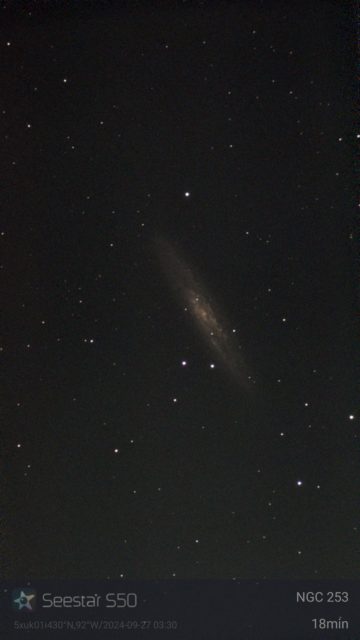
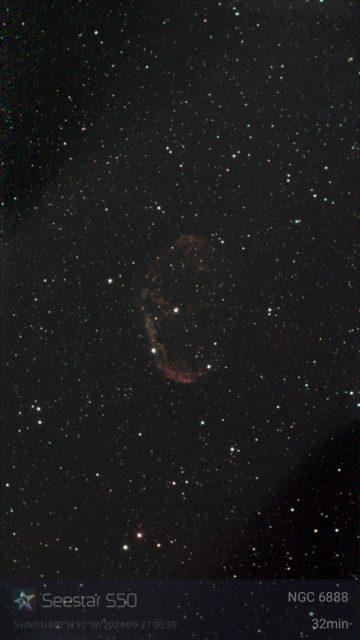
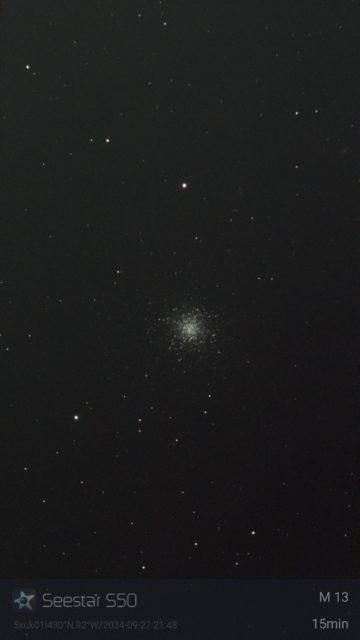
After waiting a while for the tech to mature, I decided that a Smart Telescope would be fun to play with. So, I got the cheapest one on the market.
ZWO built it originally and they spun off a new company called Seestar to market it. In this case, the unit is the Seestar S50, a 50mm triplet in an all-in-one design including mount, camera, computer and storage.
Here’s the first light images from it:
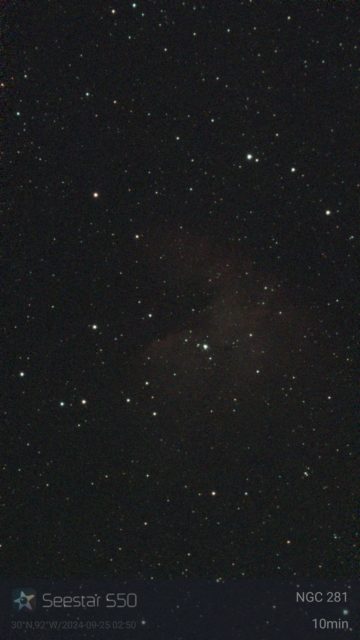
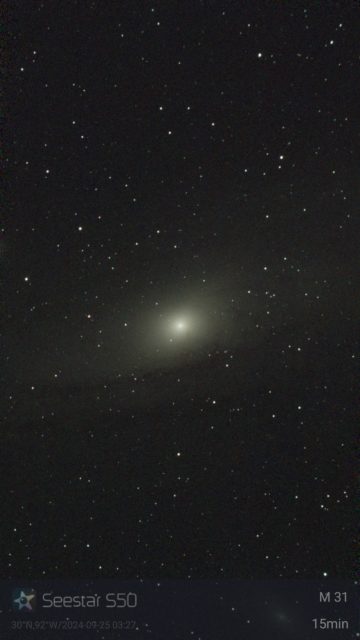
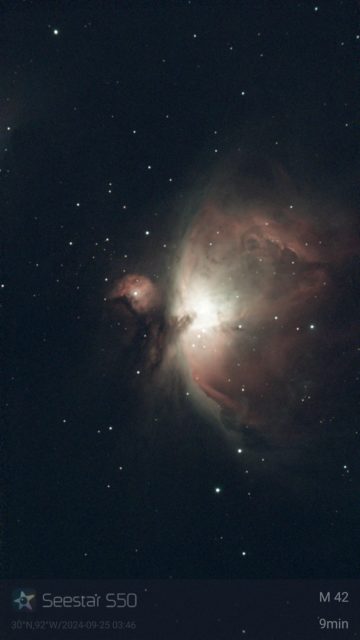
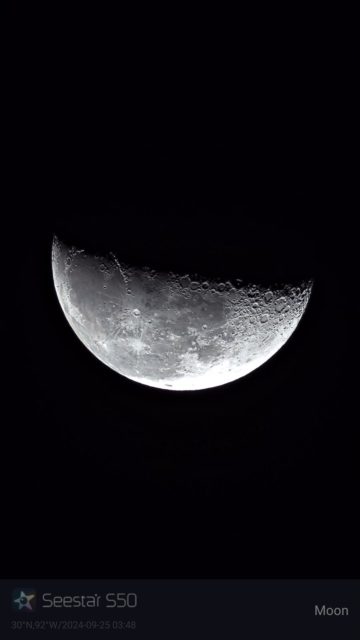
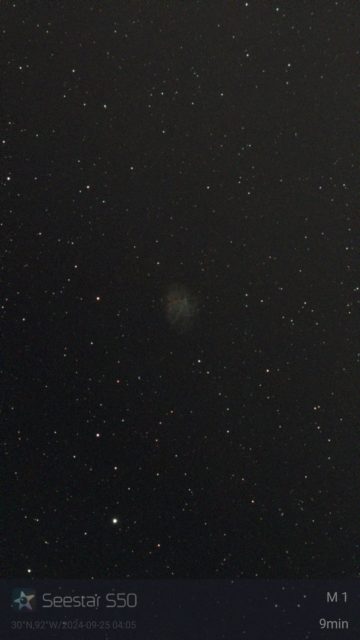
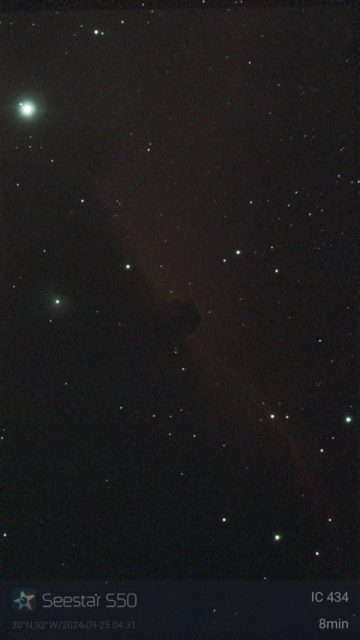

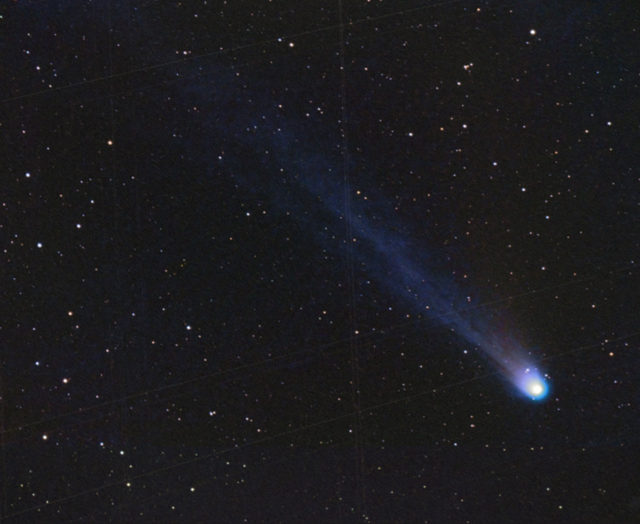
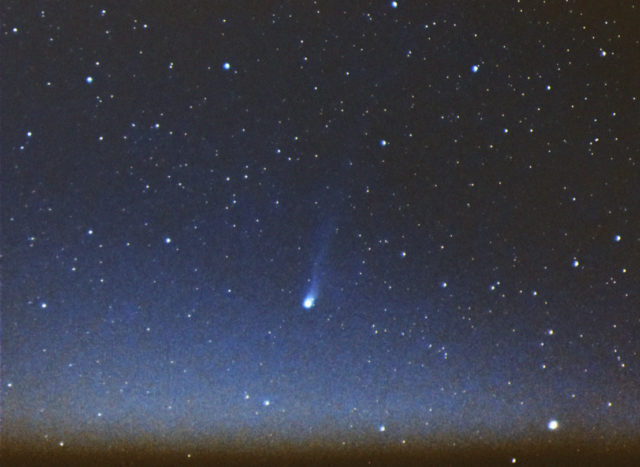
Great transparency for this session, but very, very poor seeing. The guiding failed because it was so bad. Star were literally jumping from place to place in the guide camera view. So, I went unguided and had to dump more subs than I could afford. The comet was now setting over a more intense light dome than before at this location, too, which didn’t help. And then there’s all the darn satellites! Thanks a lot, Elon!
Since this was just about the end of the northern hemisphere’s time to catch the comet without twilight interference, I put together a montage of the best 12P images I managed to take while it was visible:
Too bad the weather didn’t cooperate in early March for me when the comet was higher in the sky. But, I’m glad it finally did clear up enough for me to get these before it was too late.
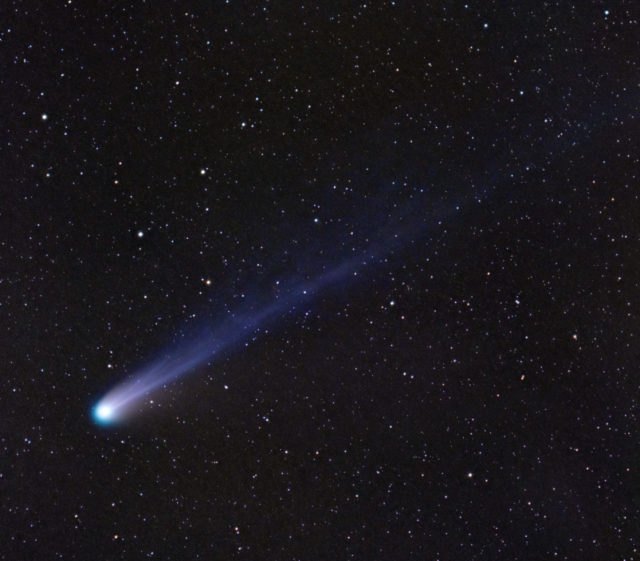
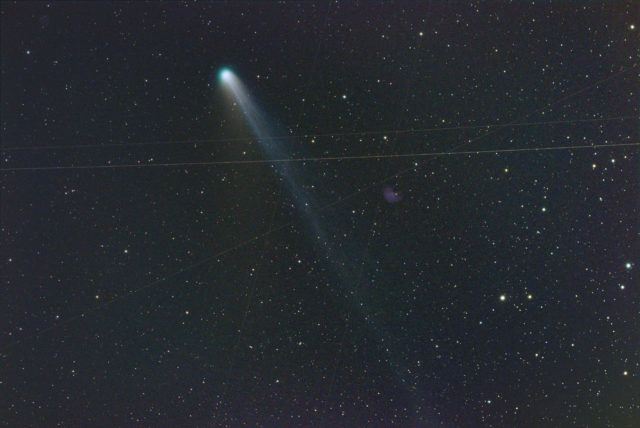
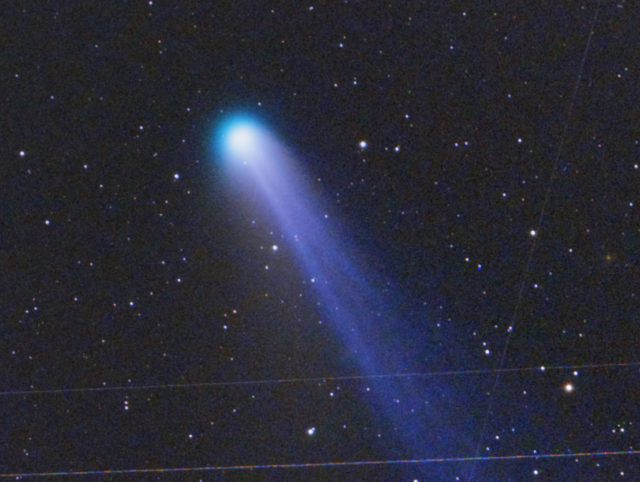
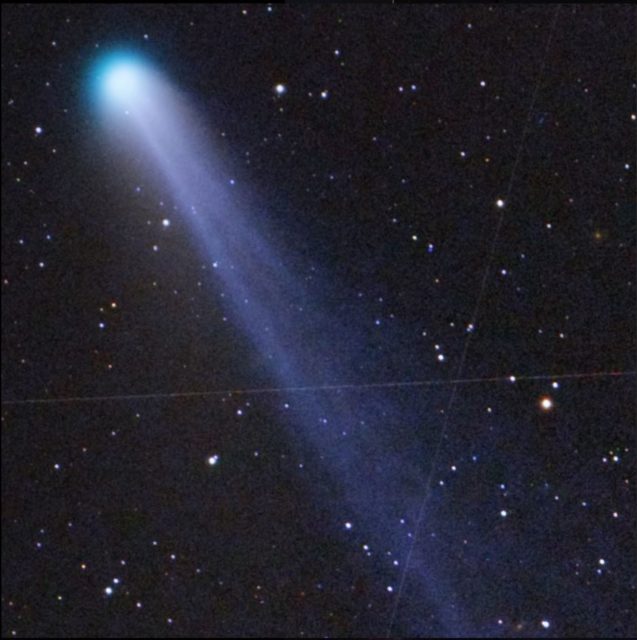
Comet 12P/Pons-Brooks on March 29, 2024, 01:32 UT (8:32 PM local time.) 4 x 2 minutes, QHY294C, AT60EDP at F/5. SharpCap 4.1 for acquisition and Live-stacking. Exported as displayed and color corrected in PSCS3.
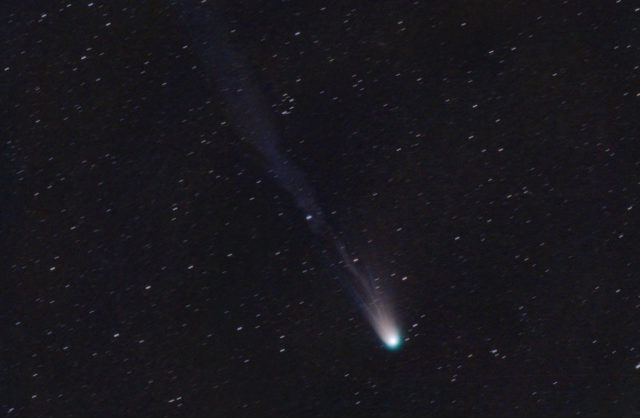
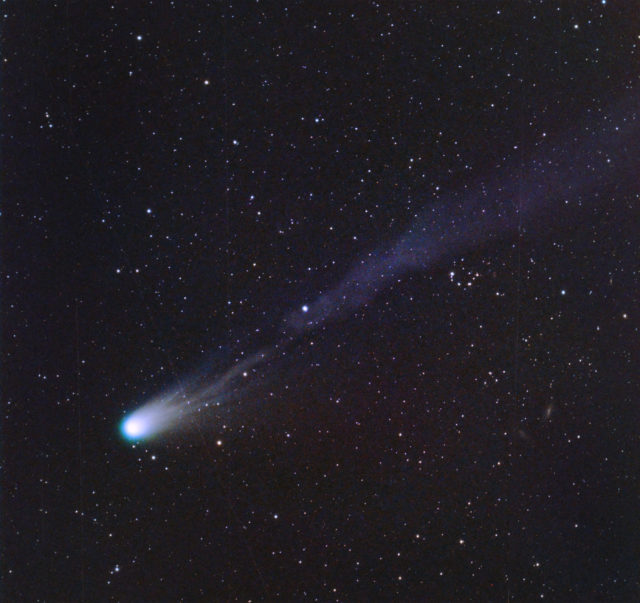
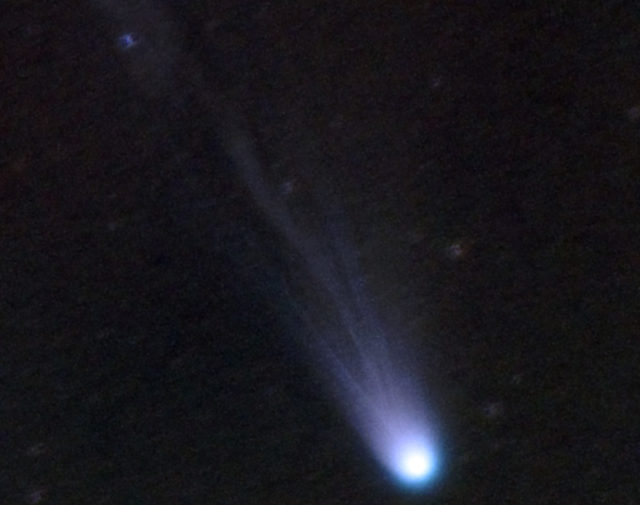
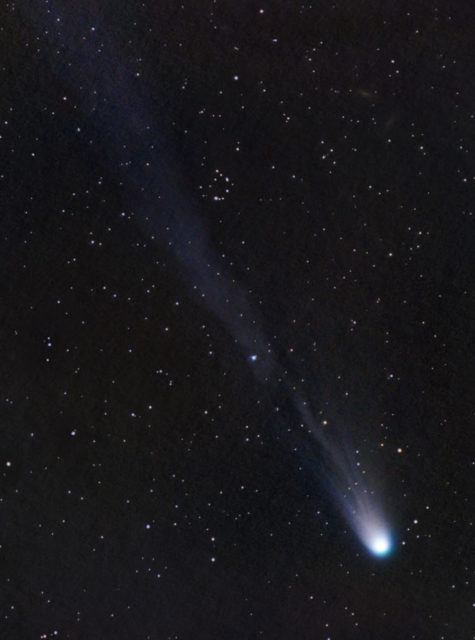
FINALLY! I managed to get out of town on the first clear night in quite some time and bag Comet 12P/Pons-Brooks. It was only a few minutes worth before the comet sunk too low in the west soon after twilight ended. But, it was enough.
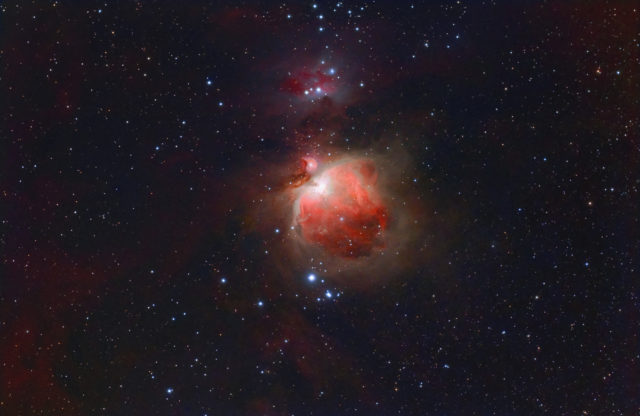
I was trying to get more data on 12P/Pons-Brooks, but it was too cloudy and the comet was too low. So, I moved on to M42 and tried to get some shorter 30 second exposures that would not overexpose the core. They were added into what I had from the last session in the image above.
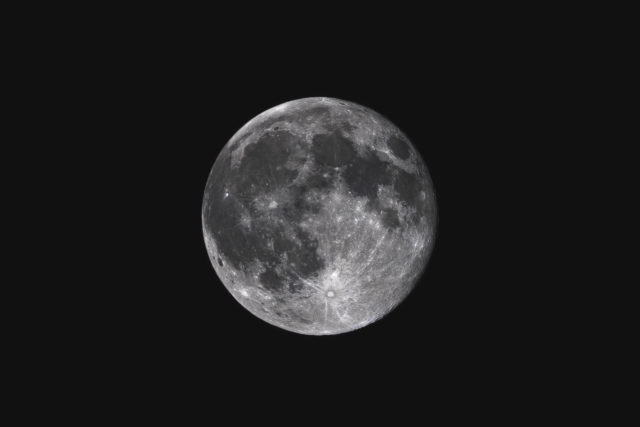
I normally don’t image during a full moon, but the weather was beautiful and I had a new telescope to do more testing with. Plus, there was a comet just begging me to take it’s picture. I couldn’t pass up the chance.
I ended up taking images both Saturday and Sunday nights. I tried to give lots of time to single objects and not jump around so much, for a change.
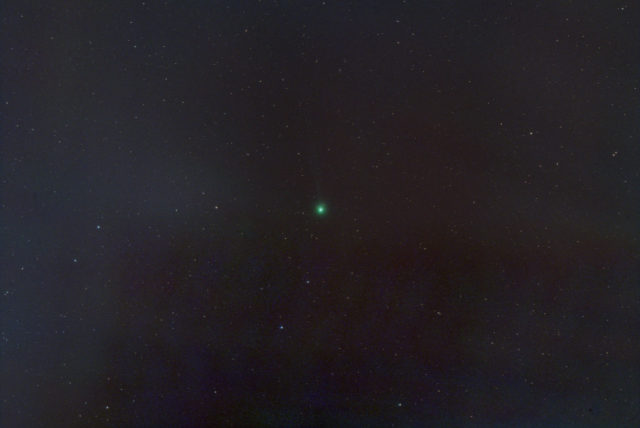
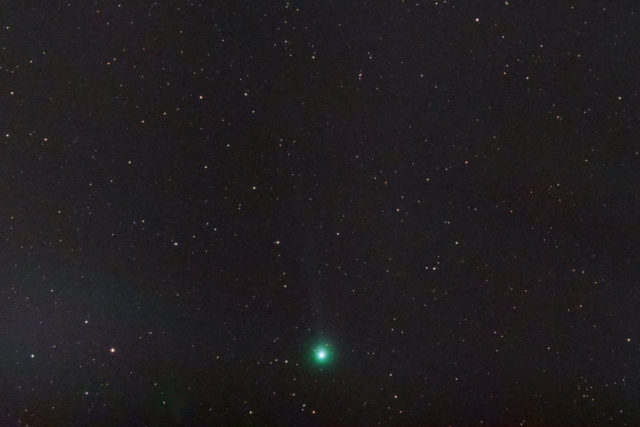
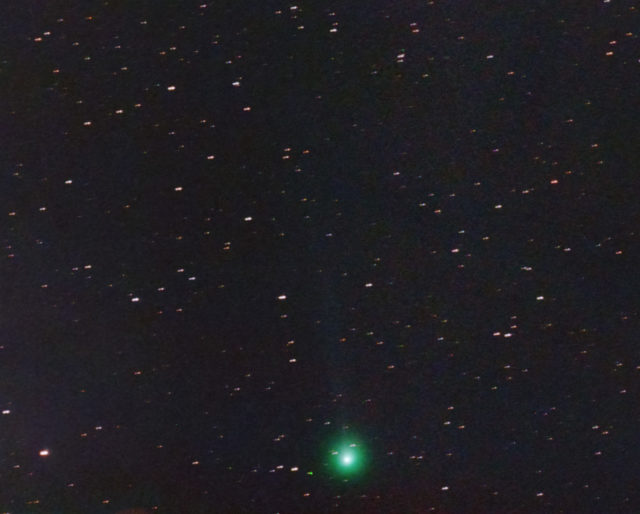
The comet was very low in the west at dusk. I had to quickly get shots and didn’t notice a building’s awning was in the shot along with street lights casting reflections from that direction. Clouds coming and going didn’t help, either.
But! This comet is bright enough to show up (with a tail!) that low in the muck of a Bortle 8-9 zone! That’s quite bright, by most comet imaging standards!
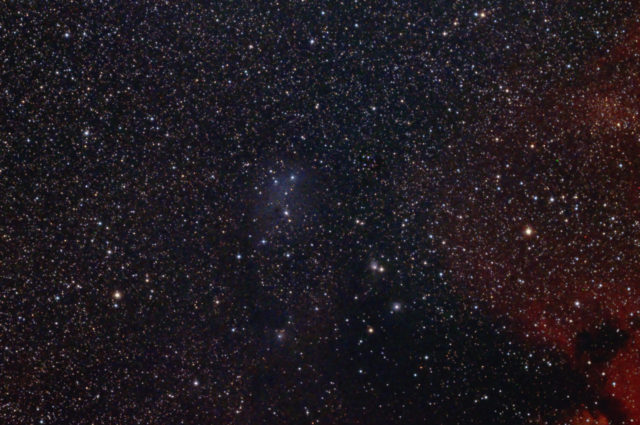
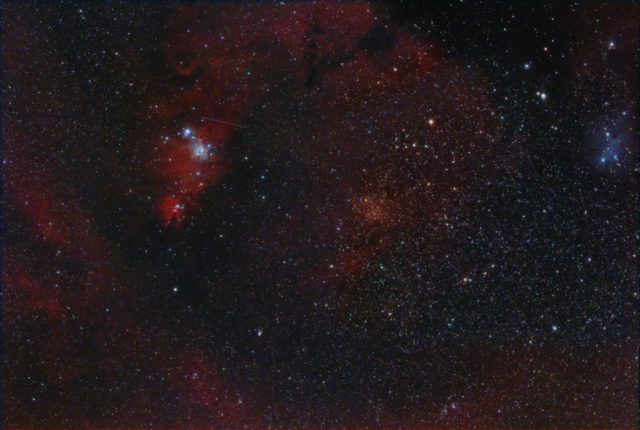
The Cone and the IC 446 Nebula area. It was well placed and I shot 4 hours for IC446 on one night and did a short run on the Cone next door the following night.
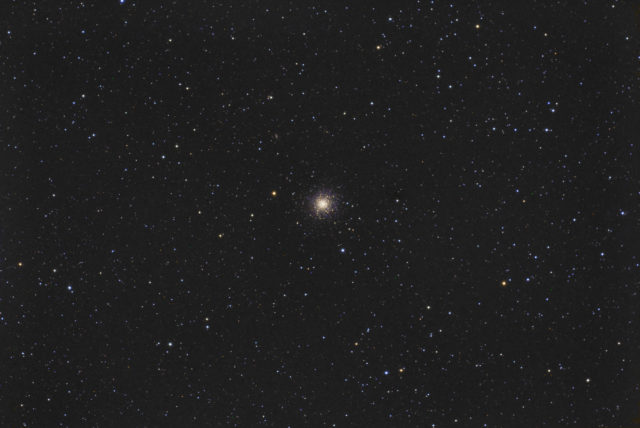
I always enjoy seeing M13 again after it emerges in the late winter morning skies high enough to get imagery. The colors got washed out with all the moonlight, unfortunately. I created a darker version with more color enhancement, but the washed out look remains:
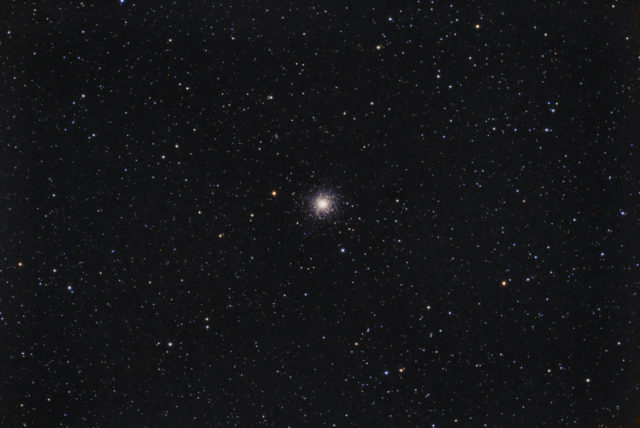
Oh, well… I had fun taking it and processing it. 🙂
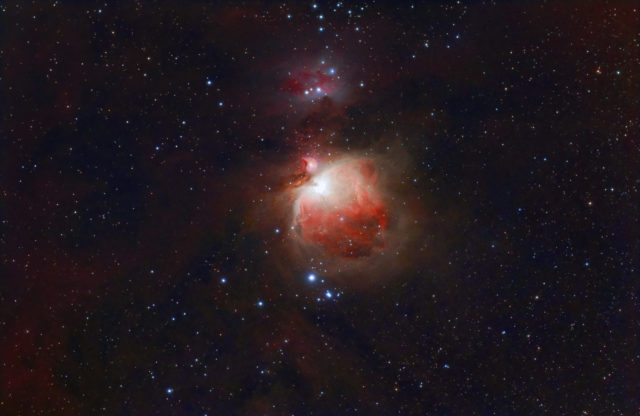
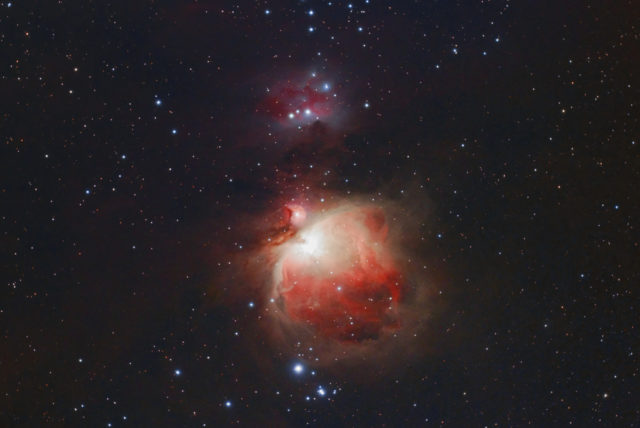
Here’s the very first stacked image taken with my new Astro-Tech AT60EDP. It’s a 60mm, F/5 Petzval telescope with 300mm focal length. This was 64×180 sec using the new scope. Location was a Bortle 8-9 zone with a bright moon out, 48F, clear and above average transparency. The second version is the full field.
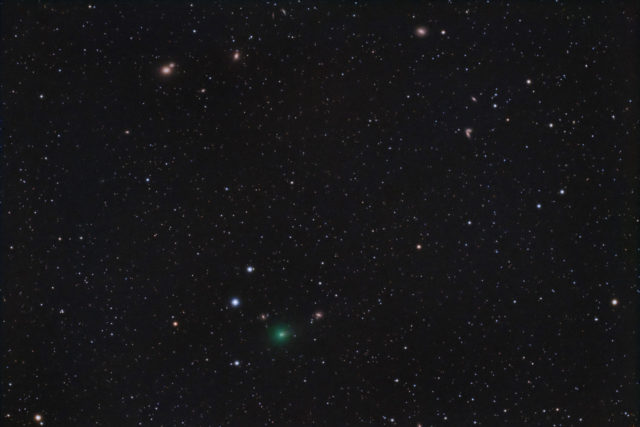
Comet 62P/Tsuchinschan near the galaxies NGC 4608, NGC 4596. Also included are M58, M59, M60 and other faint galaxy fuzzies in the Virgo Galaxy Cluster.
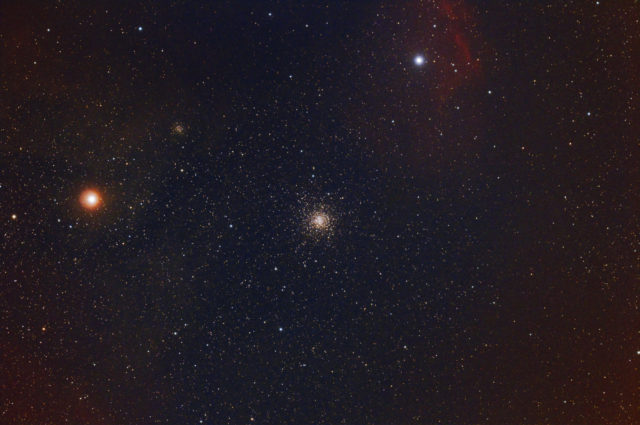
M4 Globular Cluster, Antares and friends in Scorpio. It was still the 1st light night for my new AT60EDP, but at 5:00 AM the next morning. This is 11 x 3 minutes with a QHY294C, Antlia Triband RGB Ultra filter from a Bortle 8-9 zone. Still noisy with only 33 minutes and there was some twilight, but I’m sure I’ll be able to add to it in time.
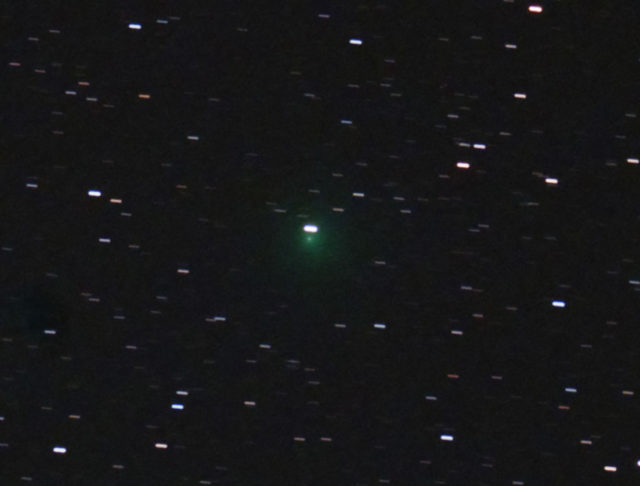
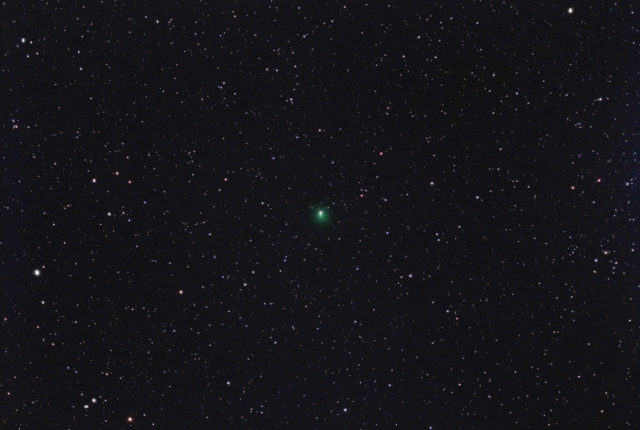
It was a clear Sunday evening on Jan 28th, 2024 and I had to do some tweaking to the scope, so I took advantage of the good weather and did some imaging to test the results.
After the tweaks and adjustments for the scope, I went straight to Comet 144P/Kushida, which was well placed in the early evening sky. I took 45 minutes worth of subs and above are the two images I generated from this data.
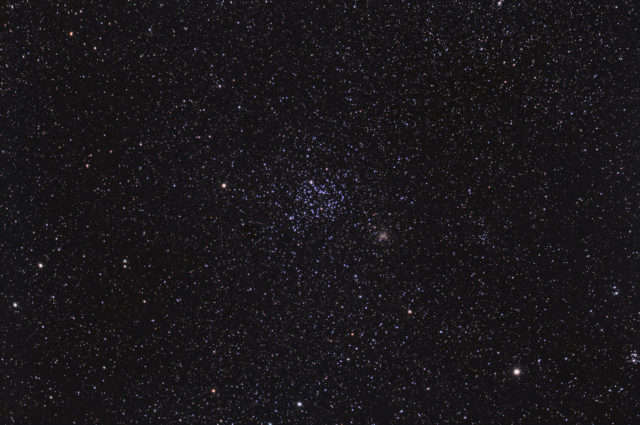
I shot of few sub-images of M35 the last time I was out and wanted to return to it now that I tweaked the scope. I got two hours of data on it and it came out reasonably well.
By the time I finished M35, the moon had risen high enough to drown out any dim nebulae and whatnot, so I shot the moon itself. It was still rather low in the sky, but did not come out too bad:
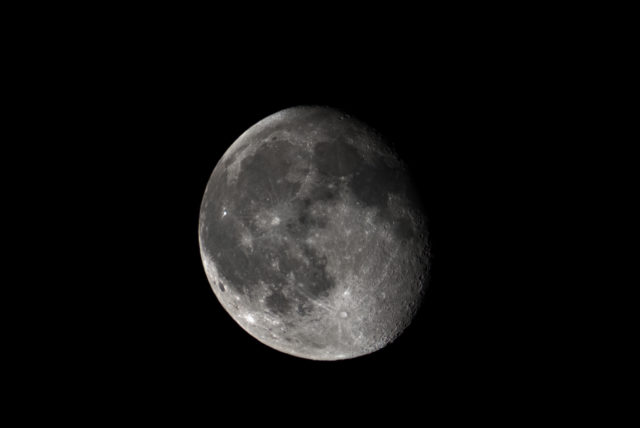
I resized it 200% for this display image and did some sharpening with the AstraImage Maximum Entropy Deconvolution filter in PS. Yes, not too bad at all for a 60mm scope.